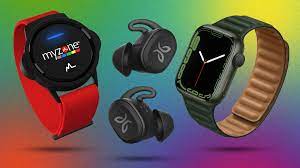Fitness equipment was once seen as a luxury; since baby boomers became the largest segment of society, health clubs and exercise machines have become an everyday part of life. Some machines specialize in specific muscle groups – for instance squat racks feature traditional or kipping pull-up bars to target individual muscle groups.
Treadmills
A treadmill is an indispensable piece of exercise equipment for anyone hoping to improve their cardiovascular health. Used for running, walking or jogging sessions at both commercial fitness facilities and home gyms alike, treadmills provide an effective cardiovascular workout while simultaneously strengthening lower body muscles.
Start your treadmill workout off right by warming up first. Get your heart rate up before stepping onto the treadmill, and perform simple lunges and squats – this will prevent injuries while increasing flexibility.
After your warm-up, use a high-intensity treadmill routine to burn fat and build endurance. Aim for a 1:1 ratio between power walking and running with short rest periods in between; additionally incorporate resistance bands as resistance targets to target various muscle groups.
Ellipticals
Eliptical machines offer low-impact exercises that mimic walking or running movements, making them suitable for those suffering from joint pain or arthritis and burning more calories than other cardio workouts in less time.
Most ellipticals feature moveable arms connected to pedals and resistance systems; stationary arm systems may offer less mobility but still offer an excellent upper body workout.
Some ellipticals offer adjustable incline settings to increase the intensity of your workouts. When first beginning an elliptical program, start slowly and gradually increase speed and resistance – this will build endurance while helping prevent injury. When ready, crank up both incline and resistance for an all-out challenge!
Free weights
There is an assortment of weight training equipment at most gyms. Your choice depends on your fitness goals and skill level; some fitness experts suggest rotating between free weights and machines for the best strength training results.
Free weights force you to engage your stabilizer muscles and help improve balance and coordination, both key components for functional strength – that is, being able to perform everyday activities – significantly.
Free weights such as dumbbells, barbells, kettlebells and medicine balls are an excellent way to build muscle; however, they may be intimidating if you’re new to gym life. Luckily, most weight machines provide instructions on how you can customize them according to your body size and strength level.
Lat pull-down machine
Lat pulldown machines are an invaluable way to strengthen and develop back muscles. Used properly, these machines can train trapezius muscles, posterior deltoid heads and biceps brachii muscles as well as increase overall back muscle growth. Furthermore, unlike barbell rows, pulldown machines also enable face pulls – an effective accessory exercise to strengthen shoulders without strain.
An ideal starting point for the lat pulldown machine is sitting on a bench and grasping the overhead bar with a pronated (palms-in) grip that is slightly wider than shoulder width apart. Once on, adjust it by leaning your torso backward and exhaling, pulling down on exhale. Also try neutral or supinated grips to vary movement and target different muscles.
Rowers
Long and low rowers can be found throughout gyms, used as warm-up, cool-down or full-on cardio sessions. Unlike treadmill sprints or box jumps, rows are gentle on joints like your knees and hips while still providing significant conditioning impacts.
Start Rowing Today To begin rowing, sit comfortably on a machine and place your feet on either a foot bar or straps (depending on its model). Grab the handle that connects directly with the flywheel at the front of the machine via cable.
Pull the handle towards your chest as you push back with legs and core muscles to engage trapezius and lats muscles; feel the burn in biceps and shoulders! Your catch position should end up where oar blades are perpendicular or square to the water surface.




